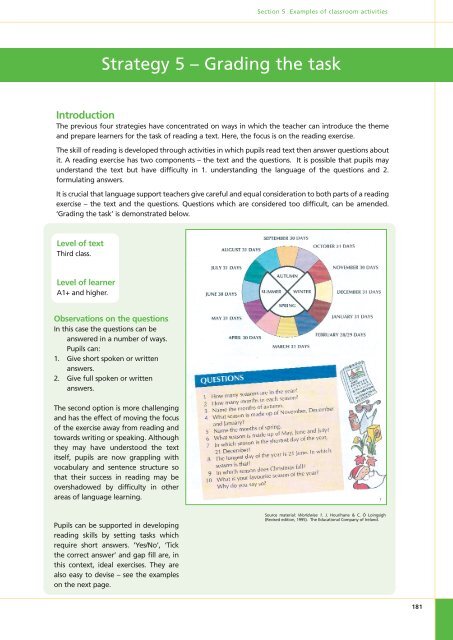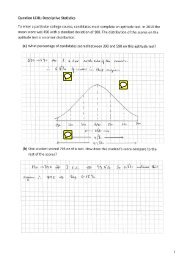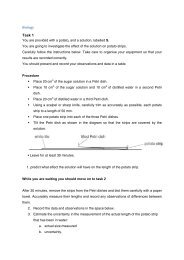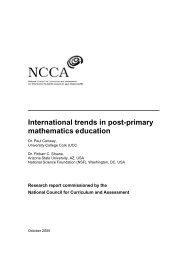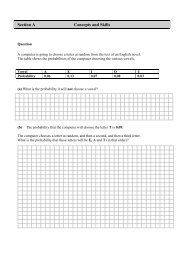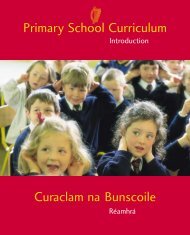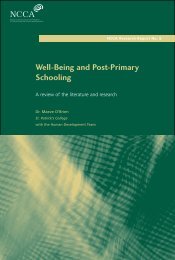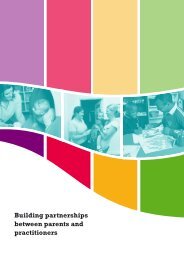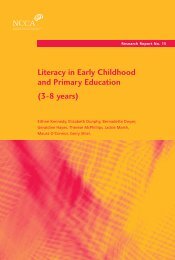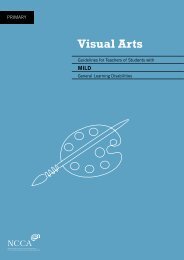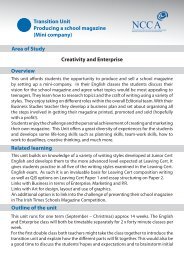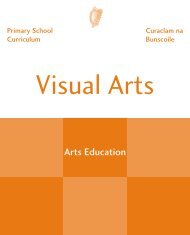Up and Away - National Council for Curriculum and Assessment
Up and Away - National Council for Curriculum and Assessment
Up and Away - National Council for Curriculum and Assessment
Create successful ePaper yourself
Turn your PDF publications into a flip-book with our unique Google optimized e-Paper software.
Section 5 Examples of classroom activities<br />
Strategy 5 – Grading the task<br />
Introduction<br />
The previous four strategies have concentrated on ways in which the teacher can introduce the theme<br />
<strong>and</strong> prepare learners <strong>for</strong> the task of reading a text. Here, the focus is on the reading exercise.<br />
The skill of reading is developed through activities in which pupils read text then answer questions about<br />
it. A reading exercise has two components – the text <strong>and</strong> the questions. It is possible that pupils may<br />
underst<strong>and</strong> the text but have difficulty in 1. underst<strong>and</strong>ing the language of the questions <strong>and</strong> 2.<br />
<strong>for</strong>mulating answers.<br />
It is crucial that language support teachers give careful <strong>and</strong> equal consideration to both parts of a reading<br />
exercise – the text <strong>and</strong> the questions. Questions which are considered too difficult, can be amended.<br />
‘Grading the task’ is demonstrated below.<br />
Level of text<br />
Third class.<br />
Level of learner<br />
A1+ <strong>and</strong> higher.<br />
Observations on the questions<br />
In this case the questions can be<br />
answered in a number of ways.<br />
Pupils can:<br />
1. Give short spoken or written<br />
answers.<br />
2. Give full spoken or written<br />
answers.<br />
The second option is more challenging<br />
<strong>and</strong> has the effect of moving the focus<br />
of the exercise away from reading <strong>and</strong><br />
towards writing or speaking. Although<br />
they may have understood the text<br />
itself, pupils are now grappling with<br />
vocabulary <strong>and</strong> sentence structure so<br />
that their success in reading may be<br />
overshadowed by difficulty in other<br />
areas of language learning.<br />
Pupils can be supported in developing<br />
reading skills by setting tasks which<br />
require short answers. ‘Yes/No’, ‘Tick<br />
the correct answer’ <strong>and</strong> gap fill are, in<br />
this context, ideal exercises. They are<br />
also easy to devise – see the examples<br />
on the next page.<br />
Source material: Worldwise 1. J. Hourihane & C. Ó Loingsigh<br />
(Revised edition, 1995). The Educational Company of Irel<strong>and</strong>.<br />
7<br />
181


